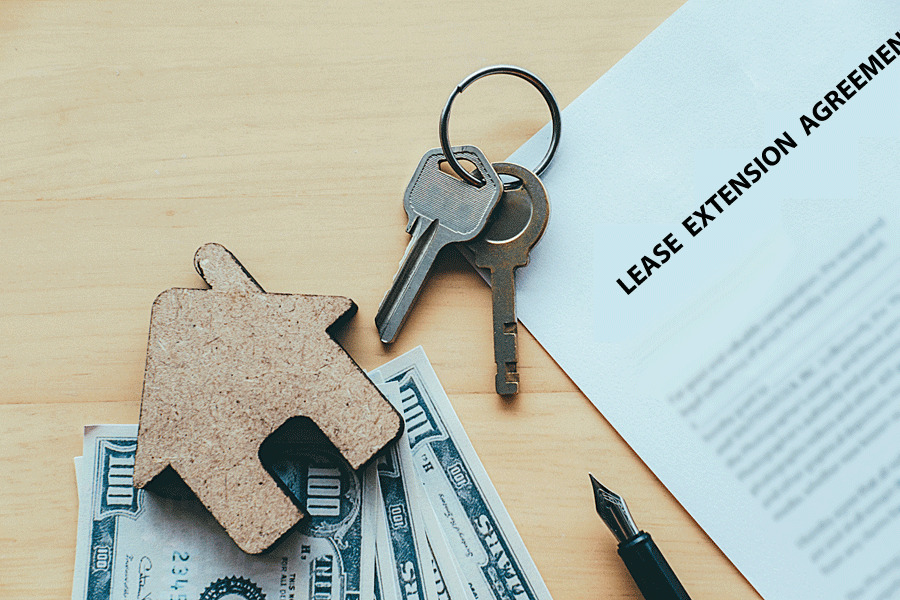When a tenant moves into a new rental property, they are typically presented with a lease to sign by the landlord. This lease outlines the terms of the rental agreement, including the lease duration, rent amount, and other regulations, such as pet policies. If any terms in the lease need to be modified, such as extending the lease or changing rent amounts, both parties must create and sign a lease amendment form.
Lease Amendment Forms: Definition and Usage
A lease amendment form, sometimes referred to as a lease addendum, lease amending agreement, lease modification agreement, or an amendment to the lease, allows the tenant and landlord to agree on new terms without creating an entirely new lease agreement.
The amendments are typically allowed only under specific circumstances, which are outlined in the original lease agreement.
Significance of lease amendments in rental agreements
A lease for any rental property serves as a legally binding contract that both parties must adhere to. Unless the original lease explicitly allows the landlord to modify certain rules, any changes require a new written agreement.
Both the landlord and tenant must agree and sign this new document before implementing the changes. If either party wishes to alter the lease’s duration, rent amount, or other fees, they must create the form, sign it, and date it together.
Free Forms
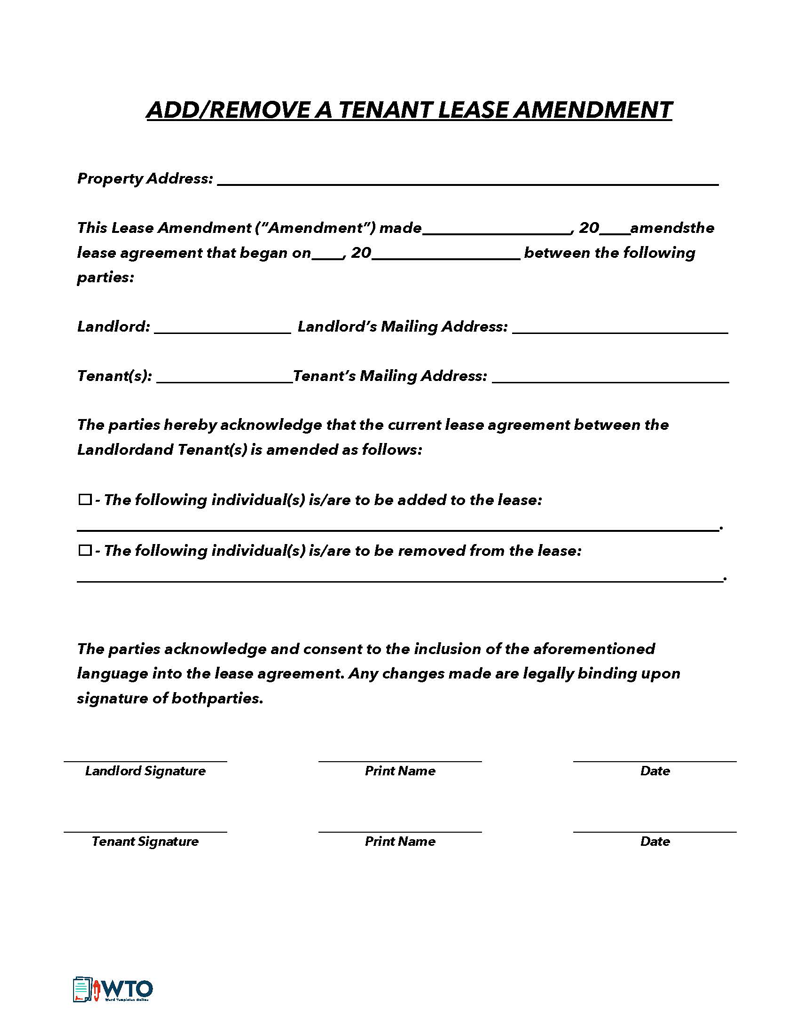
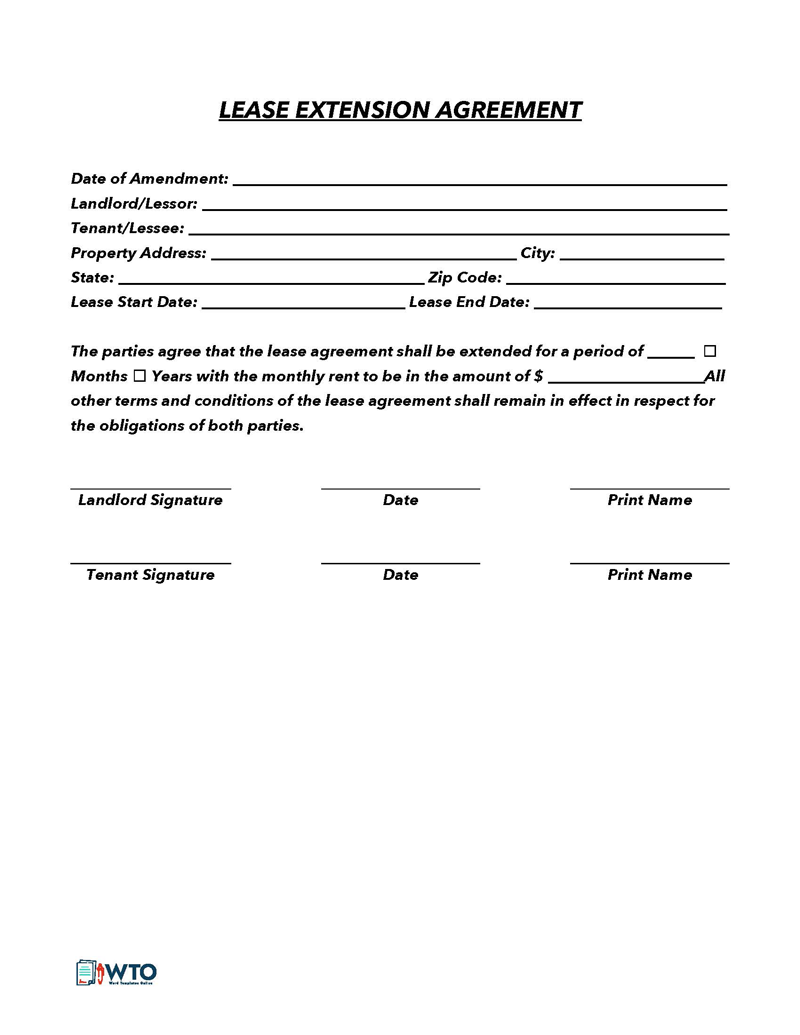
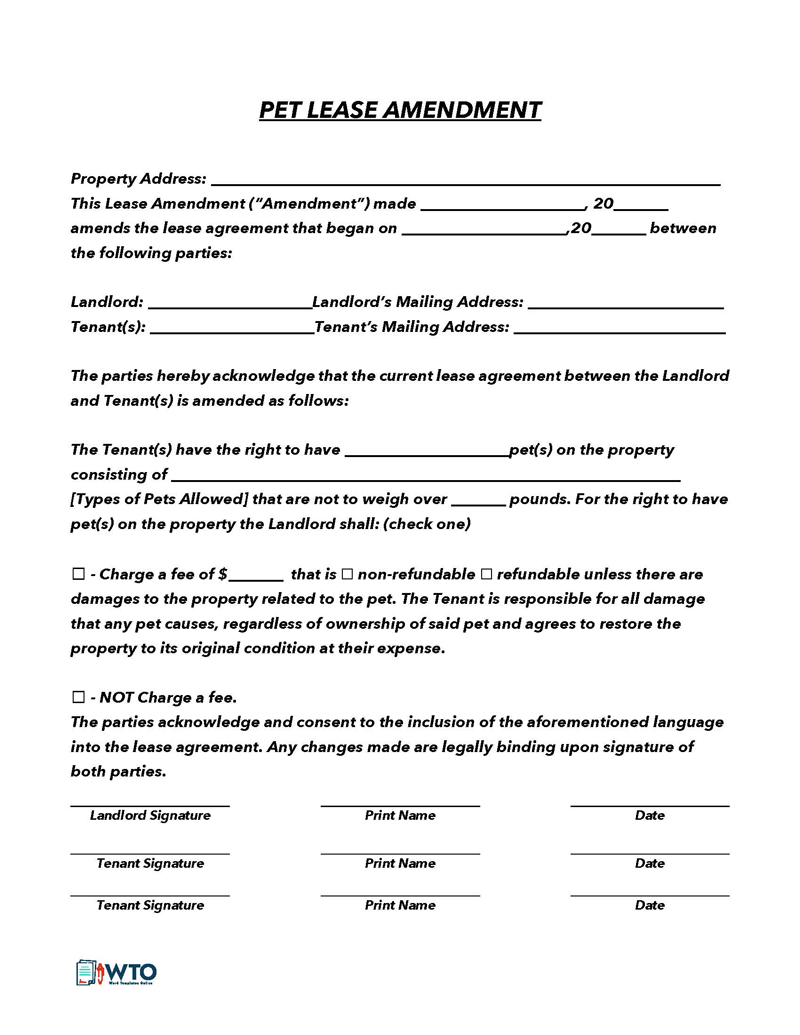
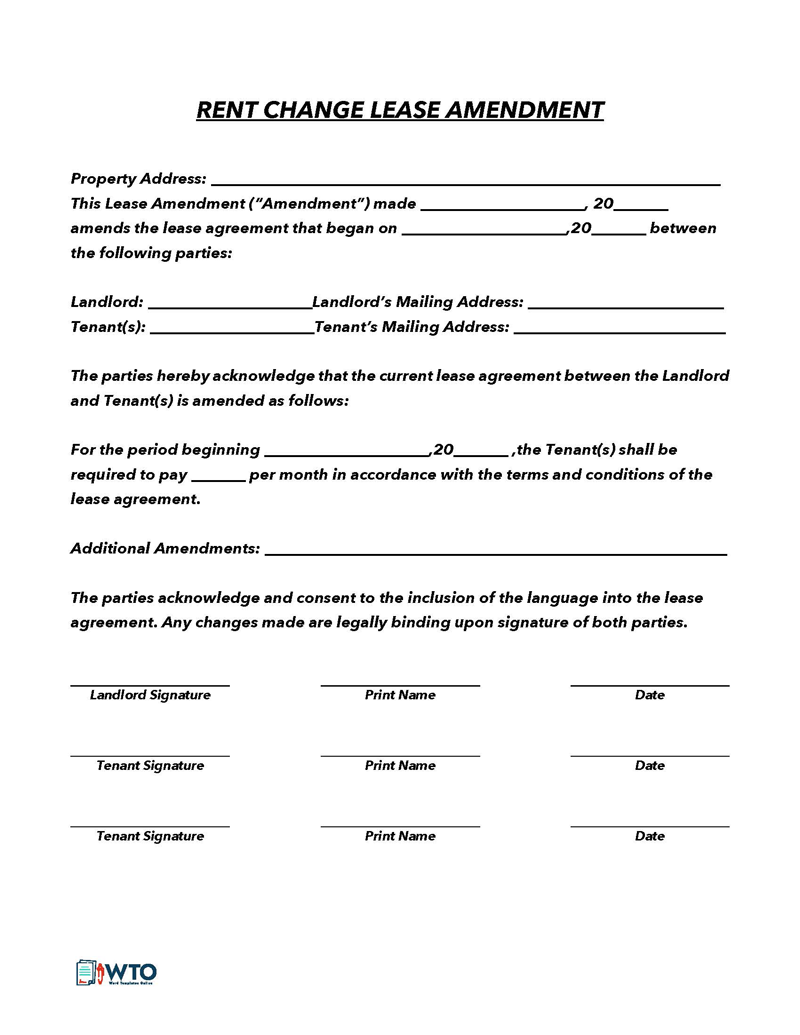
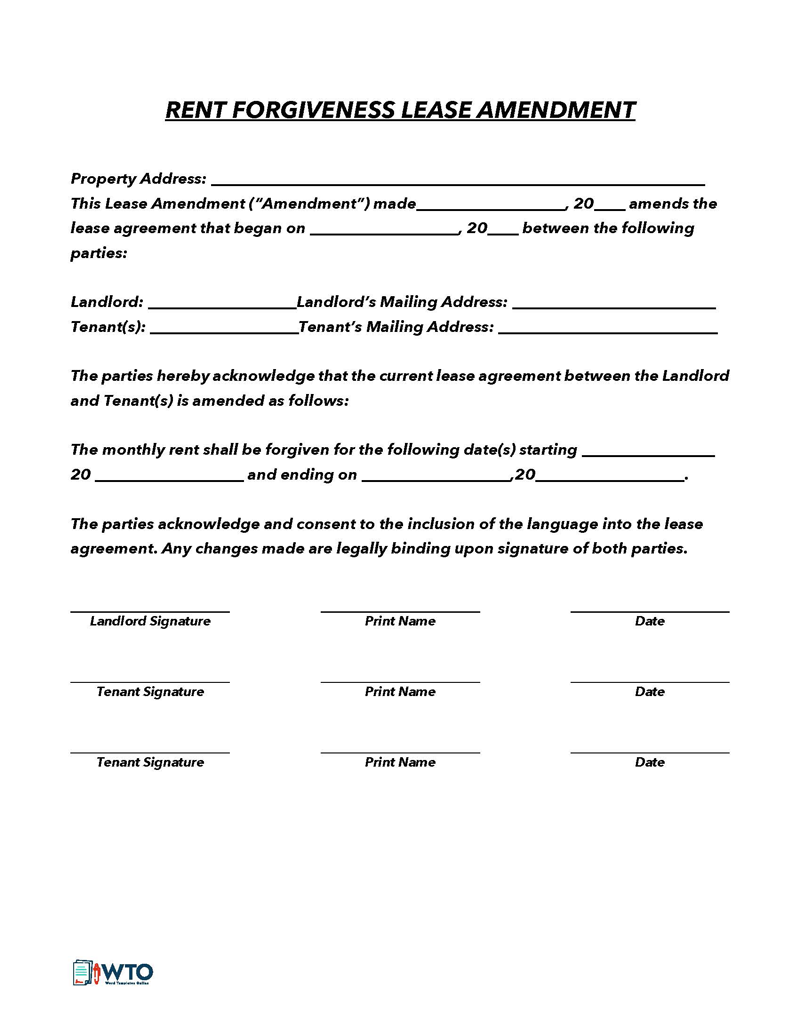
How to Amend a Lease?
Amending a lease involves clear communication and understanding of the necessary steps.
Here is a detailed guide to help you navigate the process:
Step 1: Communicate with the other party
Whether the tenant or the landlord initiates the amendment, they must communicate their intentions to the other party.
EXAMPLE
If a tenant wants a new roommate or a pet, they should discuss their request with the landlord.
Negotiations may be needed to reach an agreement. Avoid drafting the form without first consulting the other party.
Step 2: Create a lease amendment form
After reaching an agreement, draft the form using the original lease as a reference. Include the terms or sections you wish to change and the lease start date to avoid confusion.
Once the form is complete, it can be delivered by hand or sent through email. The recipient should review the agreement for accuracy and potential modifications.
Step 3: Review local and state laws
Both the tenant and landlord must ensure the amendment complies with local and state laws. Even if both parties agree on the amendment terms, it will not be valid if it conflicts with legal requirements.
Step 4: Sign the lease amendment
An electronic version of the form is recommended for easy reference and to prevent loss. If sent through email, both parties can use online signing platforms to electronically sign the form. This process verifies signatures based on email and location.
Once both parties have signed the amendment, it should be attached to the original lease, and copies should be distributed to both parties.
What to Include in a Lease Amendment Form
The form must contain all necessary information to ensure both parties understand the changes being made to the original lease.
Here are the essential sections that should be included in the form, along with detailed explanations:
Property address
Include the full property address as stated in the original lease agreement to avoid confusion. This should consist of the street address, apartment or unit number, city, state, and zip code. Providing the complete address ensures that both parties are clear about the property in question.
Lease agreement and amendment dates
Mention the name and date of the original lease agreement as a reference point. If the lease is being extended, include the new dates for clarity. This section ensures both parties understand the timeline of the original agreement and the changes made by the amendment.
Landlord’s personal information
Provide the landlord’s full name, any business name used for their properties, their complete address, city, state, zip code, and contact information (phone and email). Including the landlord’s information ensures proper identification and facilitates communication.
Tenant’s personal information
Include the tenant’s full name, complete address, email address, and phone number. This section helps to identify the tenant(s) involved in the lease and the amendment, ensuring accurate records.
Details of the amended provisions
This section outlines the specific changes being made to the original lease. It may include adjustments to the rent amount, lease length, maintenance responsibilities, or any other terms that both parties have agreed to modify. When addressing changes to roommates, property usage or boundaries, pet policies, or subletting rules, provide clear and detailed information to avoid misunderstandings.
EXAMPLE
If adding a new roommate, include their full name, contact information, and clarify their responsibilities in relation to the lease. If changes are being made to the pet policy, specify the type and number of pets allowed and any additional fees or deposits required.
Both parties must agree to the changes before signing the amendment, and it is essential to document all details and negotiations clearly.
Other terms
Most amendments only address one or a few aspects of the original lease, while the other terms remain unchanged. Explicitly state that all other terms of the original lease, such as the lease start and end dates, rental amount, and any other provisions, will remain the same when the amendment goes into effect.
Counterparts
The form may allow for counterparts, enabling the execution of the amendment when parties are in different locations. Specify the process for signing and exchanging counterparts, ensuring both parties understand how the amendment will be executed and finalized.
Governing law
Reference all local and state laws when completing the form to ensure compliance with legal requirements and proper terminology. If necessary, consult with an attorney or legal expert to verify that the amendment is in accordance with applicable laws and regulations.
Signatures
All parties, including the landlord and all tenants listed on the lease, must sign the amendment for it to take effect. Specify the process for signing the amendment, whether it is done in person or electronically. Once the amendment is signed by all parties, it becomes legally binding and forms part of the original lease.
Lease Amendment Templates
Given below are the lease amendment free templates:
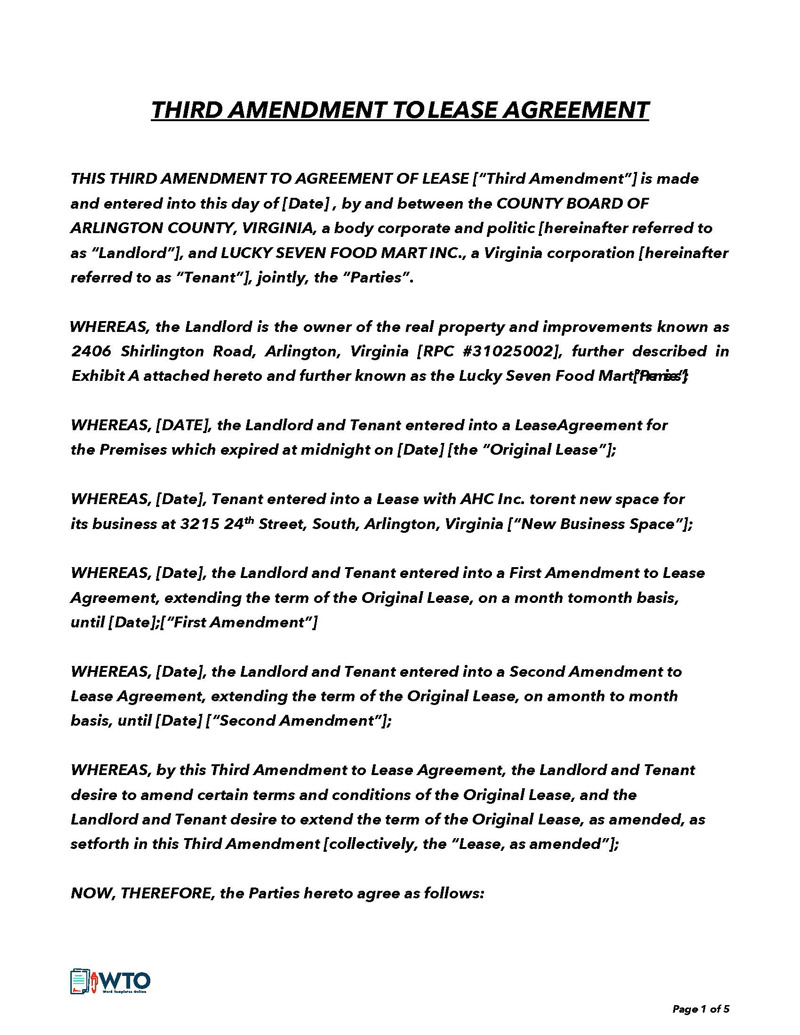
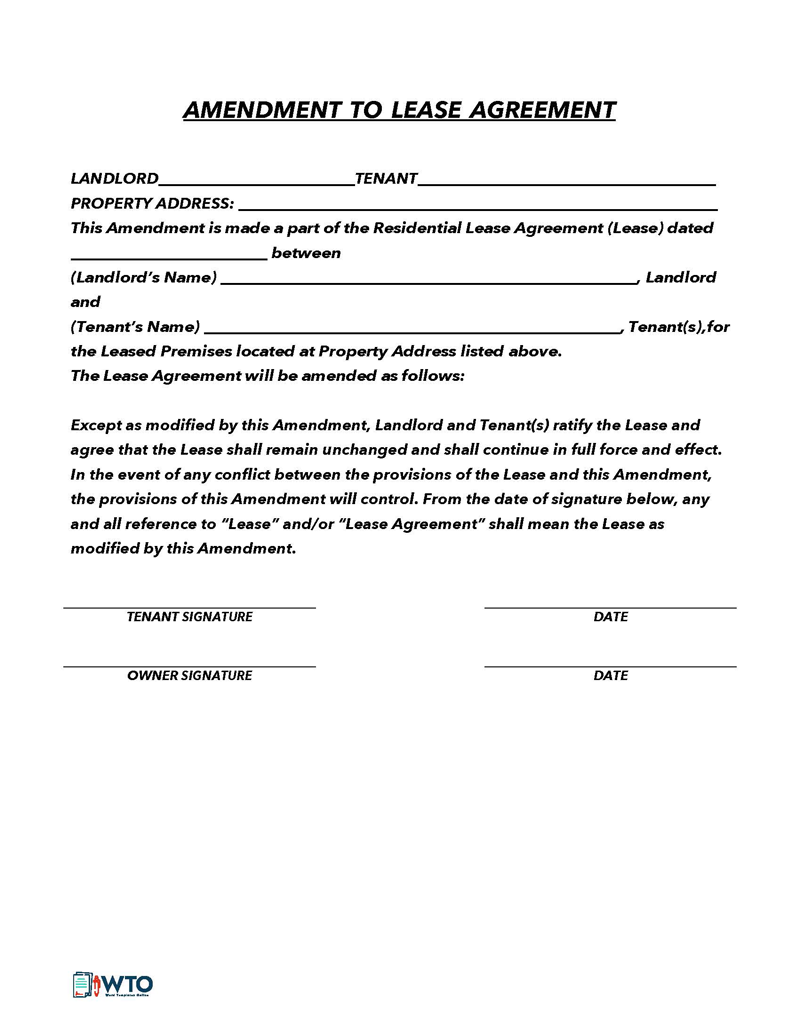
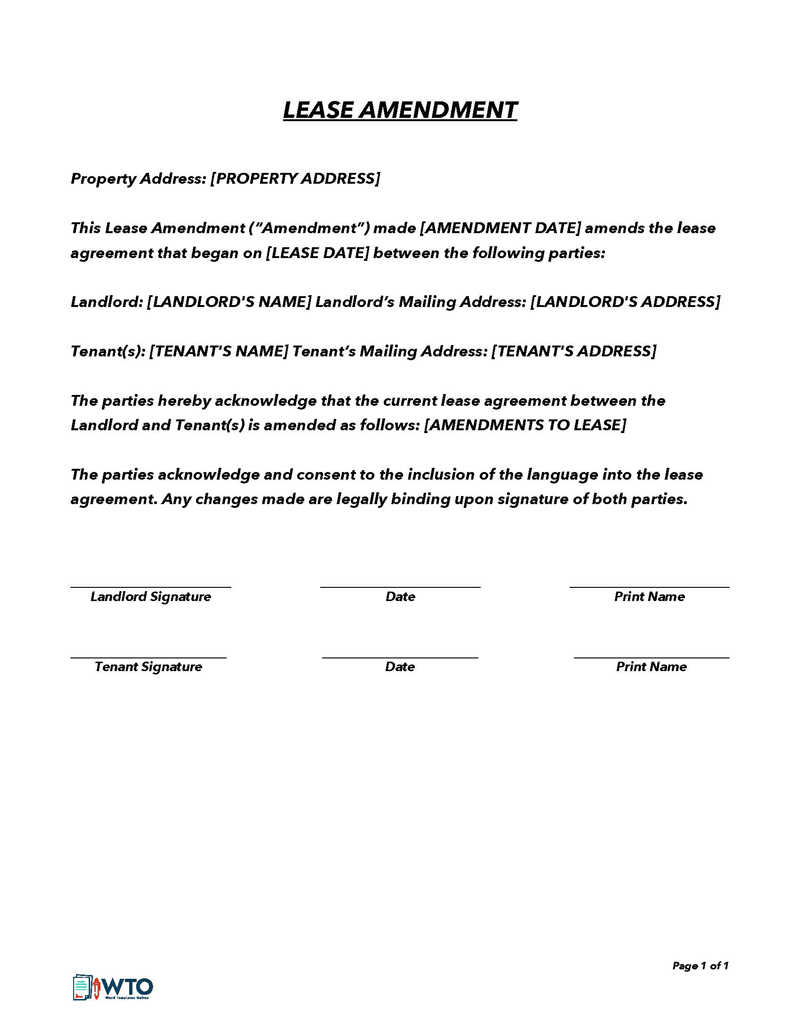

Different Types of Lease Amendment Forms
Various amendment forms cater to different situations that may arise between a tenant and a landlord.
Here are some common types of the forms:
Add or remove a tenant lease amendment
This type of amendment is used when an original tenant moves out or a new tenant is added during the lease term. The remaining tenants and the landlord should discuss the change and complete the form to update the lease accordingly. This amendment may also address changes to the rental amount or responsibilities.
Lease extension agreement
A lease extension agreement allows the tenant and landlord to extend the lease term without creating a new lease. This can convert the original lease to a month-to-month arrangement or extend the end date by a specified duration. Lease extensions benefit both parties by providing stability and a continuous income stream for the landlord.
Rent forgiveness lease amendment
In situations where a tenant temporarily cannot pay rent, a rent forgiveness amendment may be negotiated with the landlord. This amendment allows the tenant a specified grace period to recover financially, helping them avoid eviction. Tenants must discuss this option with their landlord and receive approval before implementing a rent forgiveness amendment.
Increase or decrease rent lease amendment
Both parties may agree to change the rent amount during the lease term. Typically, rent increases occur due to market fluctuations, while rent decreases might be negotiated under specific circumstances. Changes to the rent amount must be documented in the form and agreed upon by both parties before the new payments take effect.
Pet lease amendment form
Landlords may revise their pet policy to accommodate certain tenants or in response to previous tenants’ behavior. Whether a landlord decides to allow pets or revoke permission, a pet lease amendment must be signed by both parties to formalize the change. This amendment may also include any additional fees, deposits, or rules related to pet ownership on the property.
The Importance of Recording Lease Amendment
Failing to record the amendment can have various negative consequences for both landlords and tenants.
Here are some potential issues that may arise from not documenting amendments:
Financial losses and wasted time
Landlords may lose money and time if they have to create a new lease agreement or pursue legal action for lease violations. Tenants may face unexpected rent increases or penalties for having a pet they thought was approved by the landlord.
Increased stress
Both parties may experience mental stress due to uncertainty about the terms of the lease and potential conflicts over verbal agreements.
Lack of legal protection
Without a written amendment, the original lease terms remain in effect. If a dispute arises between the landlord and tenant, a documented amendment can provide legal protection and evidence of the agreed-upon changes.
Final Thoughts
Lease amendments play a crucial role in making necessary changes to rental agreements while maintaining a legally binding contract between landlords and tenants. Proper communication and adherence to local and state laws are essential in ensuring a smooth amendment process. By understanding the various types of amendments, the steps involved in amending a lease, and the potential consequences of not recording the amendments, both landlords and tenants can navigate these changes effectively and avoid misunderstandings or disputes. Ultimately, a well-drafted amendment form protects the interests of both parties and promotes a harmonious rental relationship.





